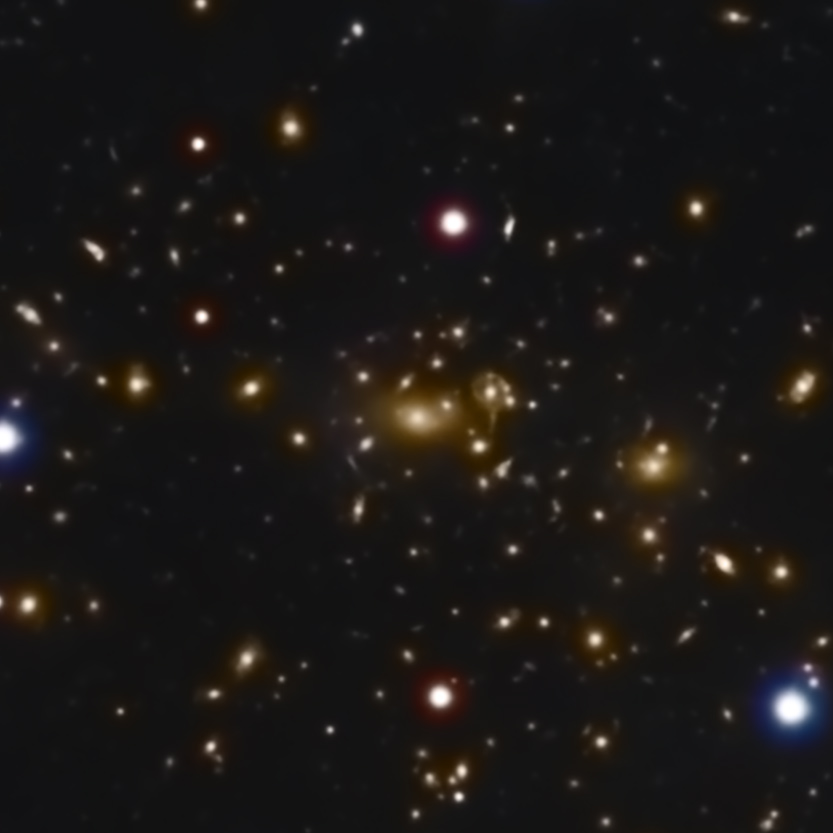

Abell 2218 is a very large galaxy cluster, about 2 billion light years from us (yes, that billion with a "b"). It is the
dozens of amber-colored blotches throughout this cropped version of the photo (yes, each of those fuzzy little balls is a galaxy, with hundreds of billions of stars); click on the links above the image
for uncropped versions in various resolutions. The cluster is so massive that its gravity acts as a lens, making dimmer, more distant galaxies visible to us. My little 14.5" earth-based scope manages to
resolve a bit of the lensing effect, but Hubble doesn't have either of those problems, and did better here. For ease of
comparison, I have superimposed the Hubble image on top of mine; click here to blink between the two versions. I think it's fair
to say that our taxpayers got their money's with that wonderful telescope! But I also think it's pretty cool that a relatively small, amateur, ground-based telescope actually can capture a bit of the
lensing effect!
The entire field of the photo is about the same width as a full moon.
Copyright 2022 Mark de Regt